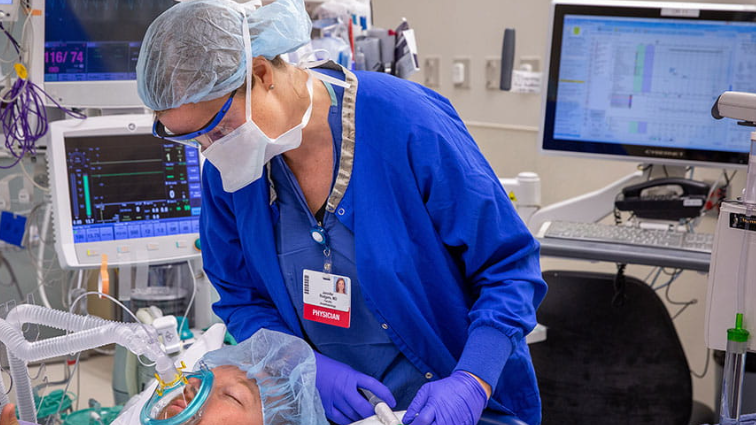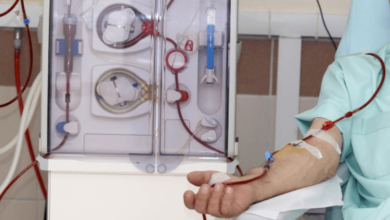Recent Advancements in Anesthesiology and Patient Safety

Anesthesiology, the field of medicine dedicated to administering anesthesia and ensuring patient comfort and safety during surgery and various medical procedures, has witnessed significant advancements in recent years. These innovations have played a pivotal role in enhancing patient safety and overall surgical outcomes. From state-of-the-art monitoring technologies to advanced techniques and rigorous training, the following are some of the groundbreaking developments that have revolutionized anesthesiology, ultimately leading to safer and more efficient patient care.
Enhanced Monitoring Technologies:
One of the most notable advancements in anesthesiology is the development and implementation of enhanced monitoring technologies. These sophisticated systems provide real-time data on a patient’s vital signs, allowing anesthesiologists to closely track and respond to changes during surgery. Continuous monitoring of parameters such as heart rate, blood pressure, oxygen saturation, and end-tidal carbon dioxide levels has become standard practice. This real-time data empowers medical professionals to detect anomalies and potential complications promptly, significantly reducing the risk of adverse events.
Monitoring technologies have evolved to offer greater accuracy and ease of use, making them indispensable tools for ensuring patient safety. These advancements have not only contributed to the early detection of issues but have also enabled proactive interventions, enhancing the overall quality of care.
Target-Controlled Anesthesia (TCA):
The advent of target-controlled anesthesia (TCA) has been a game-changer in anesthesiology. TCA is a computerized system that precisely administers anesthesia drugs based on a patient’s individual needs. By continually adjusting the drug dosage to maintain optimal concentrations in the patient’s body, TCA ensures a more controlled and tailored approach to anesthesia.
This technology minimizes the risk of underdosing or overdosing, resulting in smoother anesthesia inductions, maintenance, and recoveries. Patients benefit from more predictable and stable anesthesia experiences. The precision of TCA significantly reduces the margin for error, improving patient safety and comfort.
Ultrasound-Guided Regional Anesthesia:
Ultrasound-guided regional anesthesia has revolutionized the practice of regional anesthesia. This technique employs ultrasound technology to visualize nerves and the spread of local anesthetics in real-time. Anesthesiologists can now achieve unprecedented accuracy in delivering nerve blocks, enhancing the safety and effectiveness of pain relief procedures.
By directly visualizing the targeted nerves and the distribution of anesthetic agents, ultrasound-guided regional anesthesia minimizes the risk of complications and ensures that patients experience better pain control with fewer side effects. This advancement has particularly significant implications in the field of pain management, as it empowers anesthesiologists to provide precise and personalized care.
Simulation-Based Training:
Simulation-based training has emerged as an indispensable component of anesthesiology education. This methodology allows anesthesia providers to practice and refine their skills in a safe and controlled environment. Simulators and lifelike models replicate real clinical scenarios, enabling practitioners to develop and maintain their expertise while addressing various clinical challenges.
The use of simulation-based training benefits patient safety in several ways. It allows practitioners to gain exposure to diverse scenarios, build confidence, and refine their decision-making skills. By repeatedly practicing under simulated conditions, anesthesia providers become better prepared to handle unexpected complications, ultimately reducing the likelihood of errors during actual procedures. Moreover, this training fosters a culture of continuous learning and improvement within the field.
Medication Safety Protocols:
Advancements in medication safety protocols have significantly reduced the risk of medication errors in anesthesiology. Medication errors, although relatively rare, can have serious consequences for patients. To mitigate these risks, the field has adopted stringent safety measures.
Barcoding systems have been implemented to ensure accurate medication administration. Automated drug dispensing systems help reduce the potential for human error in medication preparation. Additionally, many institutions have introduced double-check procedures, where anesthesia providers independently verify drug calculations and medication labels before administration.
These safety measures not only reduce the likelihood of medication errors but also contribute to a culture of accountability and diligence in anesthesiology. Patients can be more confident in the accuracy and safety of the medications administered during their procedures.
Recent advancements in anesthesiology have significantly elevated patient safety and the quality of care provided during surgical procedures and medical interventions. Enhanced monitoring technologies, such as continuous vital sign monitoring, have enabled prompt responses to patient condition changes, ultimately reducing the risk of adverse events.
Target-controlled anesthesia offers precise drug administration, minimizing the risk of underdosing or overdosing. This technology results in more predictable and comfortable anesthesia experiences for patients.
Ultrasound-guided regional anesthesia allows anesthesiologists to visualize and administer nerve blocks with unprecedented accuracy. This technique improves the safety and efficacy of pain management procedures, minimizing complications and side effects.
Simulation-based training is equipping anesthesia providers with the skills and confidence to handle diverse clinical scenarios. By practicing in a controlled environment, practitioners are better prepared to address unexpected complications, ultimately enhancing patient safety.
Medication safety protocols, including barcoding systems and double-check procedures, have significantly reduced the risk of medication errors, fostering a culture of accountability and diligence within the field.
These recent advancements are contributing to safer and efficient patient care, underlining the continuous commitment of anesthesiologists to enhancing the well-being of their patients. The ongoing evolution of anesthesiology promises further improvements in patient safety and the overall quality of healthcare delivery.




